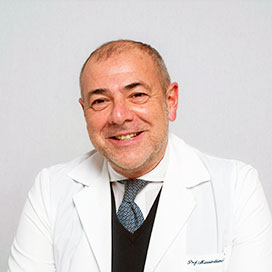Warbug effect
Colorectal cancer (CRC) is the third most common cancer and the second leading cause of cancer-related death worldwide. Countless CRC patients experience disease progression. As a hallmark of cancer, the Warburg effect promotes cancer metastasis and remodels the tumor microenvironment, including promoting angiogenesis, immune suppression, cancer-associated fibroblast formation, and drug resistance. Targeting Warburg metabolism would be a promising method for the treatment of CRC. In this review, we summarize information on the roles of the Warburg effect in the tumor microenvironment to elucidate the mechanisms governing the Warburg effect in CRC and to identify new targets for therapy.
Tumor cells use many nutrients to sustain proliferation and endless growth. This requires reprogramming of energy metabolism, which is considered one of the hallmarks of cancer. In addition, alteration of energy metabolism leads to nutritional deficiencies and accumulation of metabolic wastes, affecting the biological behavior of neighboring noncancer cells. During the process of glycolysis, cells break down glucose to produce pyruvate and a small amount of ATP. In normal cells with sufficient oxygen levels, pyruvate could enter the tricarboxylic acid (TCA) cycle to generate abundant energy, while cancer cells show high glycolysis activity regardless of oxygen levels and produce lactate through activation of lactate dehydrogenase (LDH) and inhibition of pyruvate metabolism in mitochondria. This phenomenon was first observed by Otto H. Warburg in the early 20th century and called the Warburg effect or aerobic glycolysis. Aerobic glycolysis could meet the energy and nutritional requirements essential for the severe conditions of cancer cell life for cancer progression. The role of glycolytic metabolism in cancer cells and the nearby tumor microenvironment is complex and diverse
Cancer metabolism fuels and drives cancer development. The Warburg effect is the first metabolic feature found in tumors and is continuously evolving giving new insights to treat cancer. In this review, we summarized the crosstalk between Warburg metabolism and CRC, highlighting the irreplaceable role of glycolysis in promoting CRLM and remodeling the tumor microenvironment. The extensive regulation of glycolysis in the development of CRC makes it a potential therapeutic target. Along with the development of classical small molecule inhibitors, dietary intervention studies are increasing survival rates of cancer patients and emerging as a new field of study. The rapid increase in immunotherapy promotes the development of immunometabolism, and emerging evidence has shown the potential to target glycolysis and improve the efficiency of immunotherapy. CRLM and immunosuppression in MSS CRC are two challenges in the treatment of CRC. Therefore, future drug design should focus on maximizing inhibition of tumor and immunosuppressive cells while trying to avoid damage to normal and anti-tumor immune cells. In addition, it is also important to encourage medical organizations to perform clinical trials based on glycolysis.

